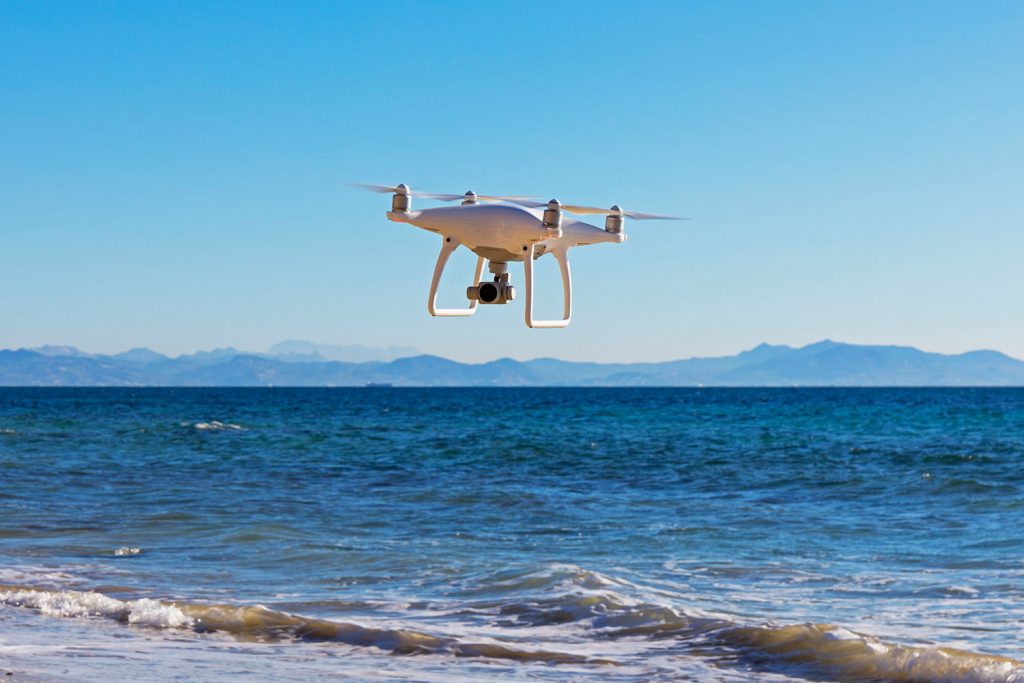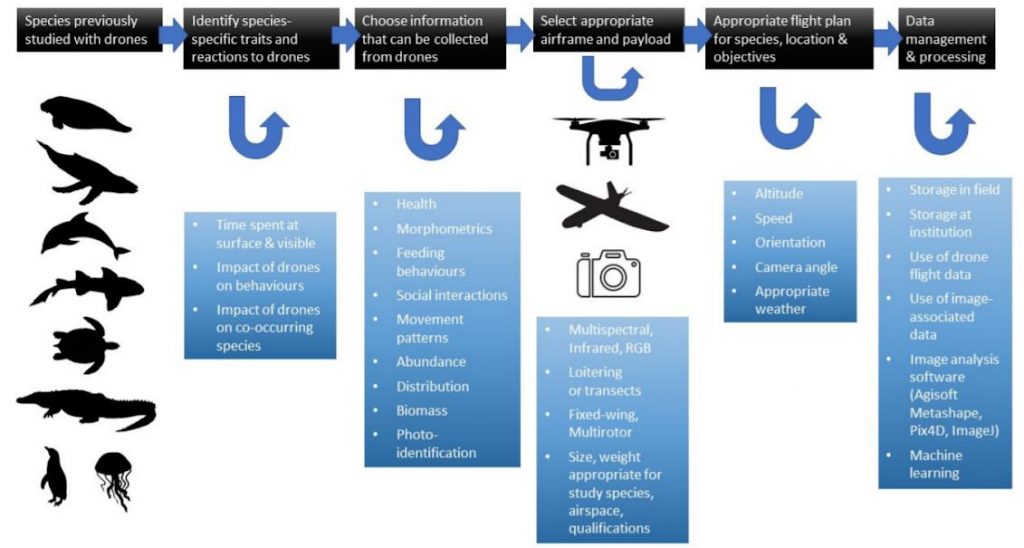This is the first post in a series which will look at recent advancements, discoveries and trends in the study of whales and dolphins. We here at Sea Watch believe strongly in the free sharing and dissemination of scientific literature and want to give you, our loyal members, the breakdown of all that’s going on in the field.

Drones are increasing in their usage across a range of industries, from land surveys for town planners to professional film makers and geologists. In the oceans, the possibilities offered by drones are unlocking new inside knowledge to the lives of the whales and dolphins. Their small size and manoeuvrability allows for camera angles we could only dream of a decade ago. To gain such an insight in years gone by, helicopter or airplane fly-overs were necessary, a costly and highly disturbing exercise. While drone battery life is often limited, and their ranges mean manned boats are still needed nearby, the usage of drones has been pivotal in a multitude of studies recently released by scientists.
How can drones help scientists?
Highly useful for examining behaviour, the health of individuals; to assessing the size and demography of communities of dolphins. Drones have proven themselves to be a prize asset for biologists moving forward. Custom rigs for drones have also allowed them to be used in niche circumstances which caused difficulties in the field, such as the collection of spray from surfacing whales (Pirotta et al., 2017).

This is not to mention the stunning footage which we have gained thanks to drones, with breathtaking footage ranging from vast swathes of dolphins riding the waves, to the peaceful majesty of the oceans largest residents gliding through the blue. Drones have also captured spectacular footage of previously unseen hunting behaviour by humpbacks and by orca, offering a viewing angle and insight previously impossible.
The relatively small size of drones compared to boats, or helicopters, make their use in theory less intrusive than traditional survey methods. With excellent manoeuvrability drones are able to move quicker, and track cetaceans more easily.
But at what cost?
While drones are an undoubted asset to the advancement of marine science, is there a possibility they are actually causing stress to the animals?
Their ability to approach animals and move into range quickly from above, could stress the animals, who may mistake the noise or the shadow cast by the drone as a threat. Previous studies have shown that this may be the case for seals and sea lions, although these creatures have highly specialised ears, and are hence more likely to be disturbed by the noise created by the drone. This noise is also almost imperceptible underwater when the drones are flown at least 10m above the sea (Christiansen et al., 2016).
However, it is always important to remember that individual animals will respond differently in different situations, and we must be sensitive to this when using drones near animals. In addition land based studies have shown that the effects of drones may not be outwardly visible to observers, work on grizzly bears in North America a study has shown a drastic increase in heart rate, despite an unflinching behaviour in the presence of drones by these apex predators (Smith et al., 2016).
| Positives | Negatives |
| Much cheaper than other forms of aerial survey such as helicopter | May cause stress to animals who may mistake the drone as a threat |
| Lightweight and manoeuvrable mean drones can get closer to animals in the wild than manned vehicles could | Low range and battery life of off the shelf drones mean a manned boat is needed nearby |
| Highly customisable, capable of recording a vast range of data | Noise and presence of drone may disturb animals, preventing them feeding |
| Stunning camera footage is useful not only for increasing awareness, but also for behavioural studies | Potential unseen reactions to drones |
| Can be automated to follow any route using inbuilt GPS |
Recent data from studies on common and bottlenose dolphins in the Mediterranean show the effect of drones to be minimal on behaviour (Castro et al., 2021). With bottlenose dolphins undisturbed by the drones, no matter the height at which the drone was flown. Common dolphins however were sensitive to the drones, when flown below 5m above the sea level showing an increase in direction change. We cannot underestimate the familiarity with whale watchers these pods may have, given they live in a tourist heavy stretch of water, however it appears the drones have little effect on the dolphins studied.
While it may seem that the positives outweigh the negatives, and certainly drones are less disturbing than research vessels, their impacts on nature must not be discounted.
Jay
Sea Watch Volunteer
Feature Blogger
“Check out this previous piece on the use of drones in Cardigan Bay, Or the use of drones by a student working with Sea Watch explained in this blog post!“
Bibliography
https://www.mdpi.com/2072-4292/13/1/156
https://www.frontiersin.org/articles/10.3389/fmars.2016.00277/full
https://cdnsciencepub.com/doi/abs/10.1139/juvs-2015-0017@juvs-vi.2016.01.issue-1
https://www.mdpi.com/2504-446X/4/4/64
What are the rules for flying drones in the UK (Courtesy of Nottinghamshire police)?
- Your drone must weigh under 20kg
- You can’t fly above 400 feet in altitude or 500 metres from you horizontally
- Ensure your drone is always in sight
- Always keep away from aircraft, helicopters, airports and airfields
- Use your common sense and fly your aircraft safely
- Any drone weighing more than 250 grams must be registered with the CAA and the drone pilot must complete an online safety test, obtaining a Flyer ID and an Operator ID that should be attached to the Drone.
- You must not fly within 50 metres of people, vehicles, buildings or vessels
- Your drone must not be flown within 150 metres of a congested area or any large group of people such as a concert or sporting event as you may be prosecuted
- If you intend to record in an area where people are, you must inform them before you start, as you will need to respect privacy, or risk being prosecuted
























